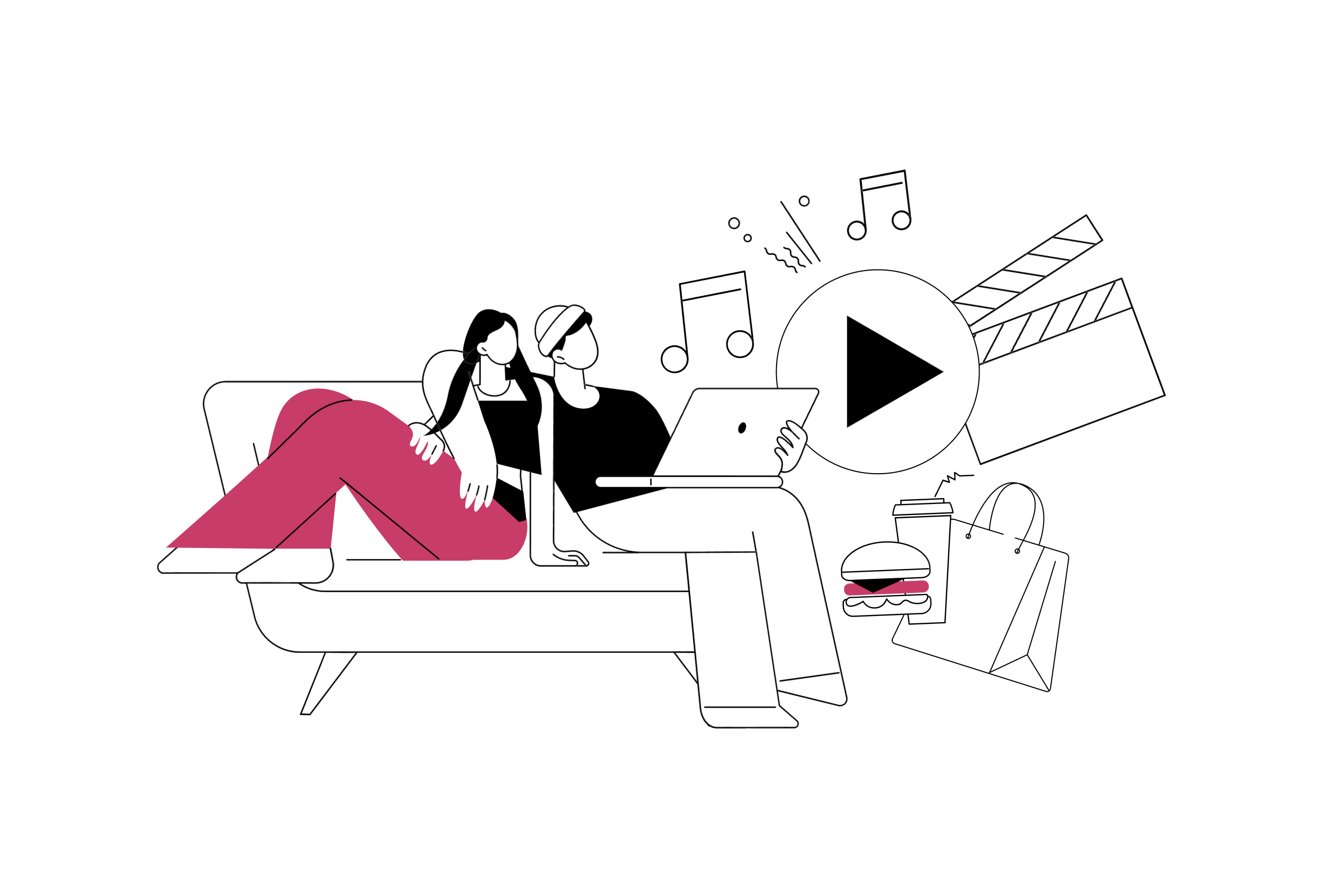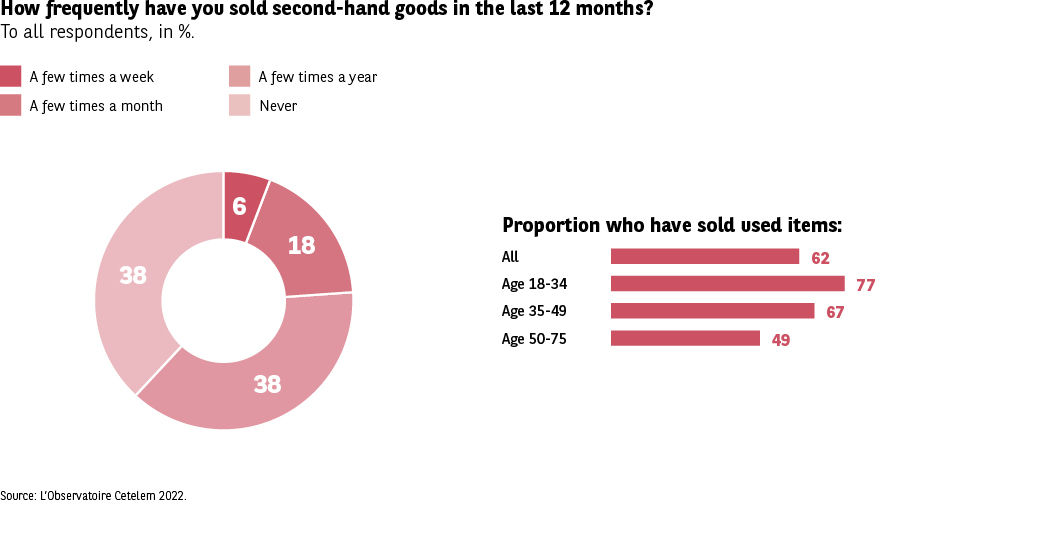The advent of the consumer seller


Selling used products, a common practice
Up until recently, economies, and more specifically the commercial transactions that take place between stakeholders, defined the roles assigned to the various parties with some degree of clarity. On the one hand, there were sellers, i.e., companies in the broadest sense of the term, and on the other there were buyers, i.e., consumers. This new survey highlights a redefinition of these roles, with the emergence of consumer sellers who have become entrepreneurial when it comes to their consumption.
6 out of 10 Europeans declare that they have sold second-hand goods in the last year, a proportion that rises to 8 out of 10 among the under-35s (Fig. 13). In most countries the proportion exceeds the average (Austria, Belgium, Denmark, France, Norway, Poland and Sweden). The nations that come closest to this figure are Romania, Spain and the UK. Norway and France are the two countries with the highest proportions of consumer sellers.
Fig. 13 Main motivations for buying second-hand
Download this infographic for your presentations L’infographie montre
les raisons principales de l’achat d’occasion (deux réponses possibles). Données : – Réaliser des
économies : 52 % – Bon comportement écologique : 36 % – Accéder à plus de biens : 29 % –
Trouver une pièce unique : 19 % – Gagner de l’argent en revendant : 14 %
L’infographie montre
les raisons principales de l’achat d’occasion (deux réponses possibles). Données : – Réaliser des
économies : 52 % – Bon comportement écologique : 36 % – Accéder à plus de biens : 29 % –
Trouver une pièce unique : 19 % – Gagner de l’argent en revendant : 14 %
Significant extra income
We saw earlier that earning money is one of the key priorities of Europeans when they get involved in the circular economy. The sums made by consumer-sellers seem to confirm this observation. Average monthly earnings from these practices stand at €77, an income boost that is far from negligible (Fig. 14).
Fig. 14 Frequency of selling second-hand items
Download this infographic for your presentations The infographic displays how frequently people sold second-hand items.
Ring chart:
– Several times per week: 6%
– Several times per month: 38%
– Several times per year: 38%
– Never: 18% By age (has sold before):
– All: 62% – Age 18–34: 77%
– Age 35–49: 67%
– Age 50–75: 49%
The infographic displays how frequently people sold second-hand items.
Ring chart:
– Several times per week: 6%
– Several times per month: 38%
– Several times per year: 38%
– Never: 18% By age (has sold before):
– All: 62% – Age 18–34: 77%
– Age 35–49: 67%
– Age 50–75: 49%
Behind this figure lie three disparities. The first is geographical. While the Hungarians, Czechs and Slovaks earn less than €40 in additional income, the figure is almost tripled in Germany and, most notably, the UK, where sellers earn an average of €115.
Generational disparities are also evident. While those in the under-35 age group earn €103 per month from their sales, over-50s generate barely €42 in additional income. The third disparity is linked to gender, with men making almost twice as much as women in their role as consumer sellers (€98 vs. €58).
Necessary expenses and precautionary saving
Despite taking on a new role, consumer sellers have not lost sight of their ambition to reconcile saving and spending. They do not tend to spend the money they earn on indulgences (10%), but rather on the products they need. This is the option favoured by 44% of Europeans (Fig. 15). And because these are by no means carefree times, 36% put money aside. Consumers in Eastern Europe are the most likely to prioritise the purchase of products they need, particularly those in Bulgaria (65%), but also Hungary (52%) and Slovakia (49%). It is worth noting that the purchasing decisions of the Portuguese, Italians and Austrians are all equally rational. When it comes to saving, the Spanish, Belgians and Swedes are the most prudent (45%, 42% and 42%).
Fig. 15 Average monthly earnings from reselling and how the money is used
Download this infographic for your presentations Average monthly earnings: – Age 18–34: €103 – Age 35–49: €86 – Age 50–75: €42
Overall average: €77 Use of money earned: – Spending on necessary products: 44% – Saving it:
36% – Buying items to resell at a higher price: 10% – Buying pleasure items: 10%
Average monthly earnings: – Age 18–34: €103 – Age 35–49: €86 – Age 50–75: €42
Overall average: €77 Use of money earned: – Spending on necessary products: 44% – Saving it:
36% – Buying items to resell at a higher price: 10% – Buying pleasure items: 10%
